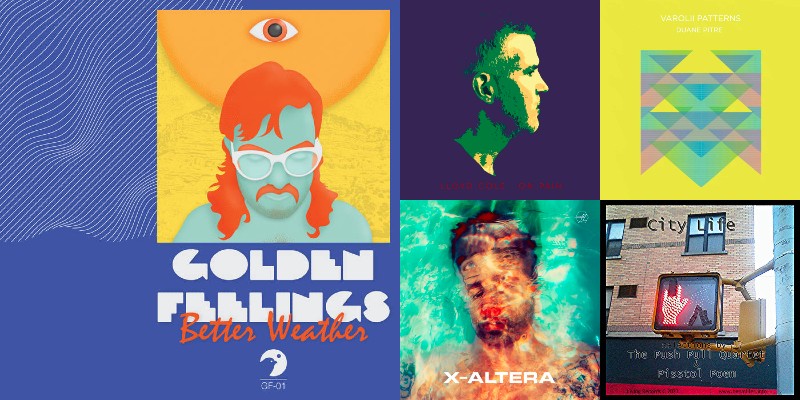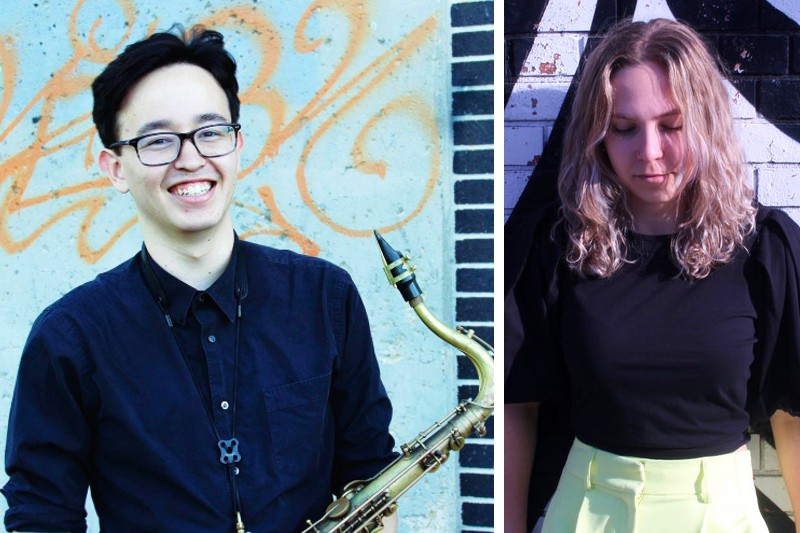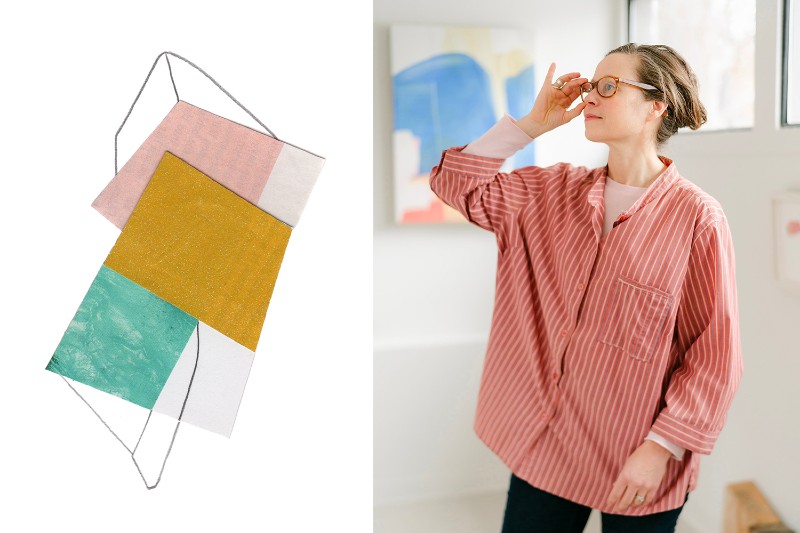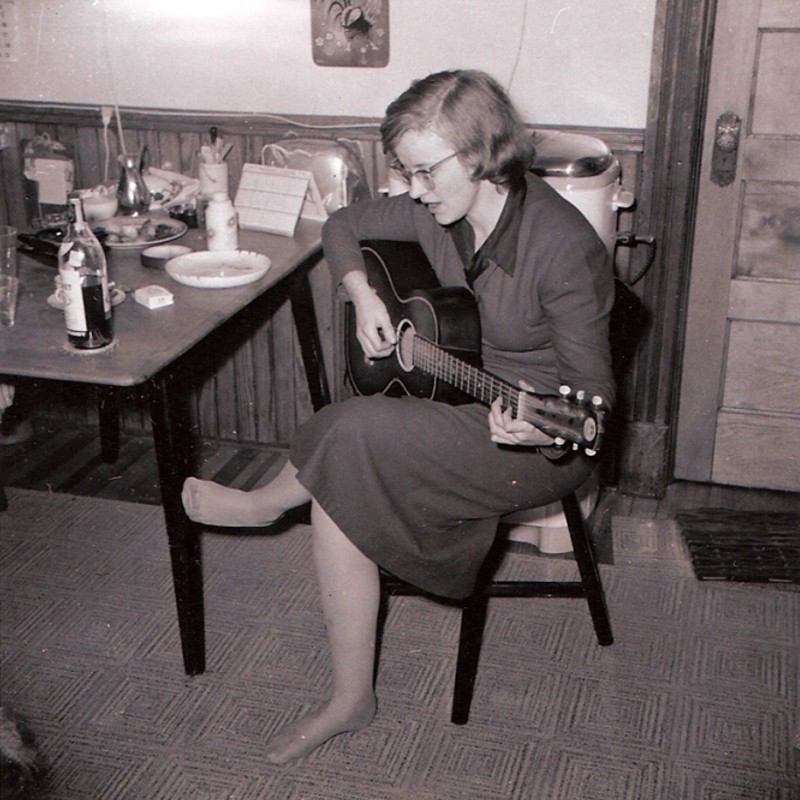Friday Five: Golden Feelings, Duane Pitre, X-Altera, Benjamin Miller, Lloyd Cole

Friday Five highlights music by Washtenaw County-associated artists and labels.
This week features chakra-aligning ambient from Golden Feelings, just intonation explorations by Duane Pitre, industrial-tinged techno by X-Altera, sparse experimental jazz by Benjamin Miller, and a synth-pop song about Iggy Pop by Lloyd Cole.
My Make Music: A personal guide to Ann Arbor's first Make Music Day

The summer solstice is a day of maximum tilt.
Not just because the Earth's northern hemisphere comes closest to the sun on June 21 but also because cities around the globe will be turning things up to 11 for Make Music Day, which encourages a celebration of sounds in plazas, parks, and porches by artists of all genres—all presented for free.
Make Music started in 1982 as Fête de la Musique in France and has expanded internationally to more than 1,000 cities in 120 countries. The first Ann Arbor edition debuts June 21 with 29 musical acts at 13 venues across town, including the Ann Arbor District Library, which is also the local coordinator of Make Music Day.
The Make Music website allows you to filter artists by genres and the shows by venues, so I went through and made my own personal festival guide, one that takes me from a forward-looking jazz trio to a forward-looking world-jazz quartet with some Indian classical, Latin-classical, techno, electronic pop, power pop, flower pots, and indie rock in between.
Friday Five: The Biscuit Merchant, Audion, Noah Fishman & Baron Collins-Hill, Time Creep, The Mercer Patterson Quintet

Friday Five highlights music by Washtenaw County-associated artists and labels.
This week features melodic death metal by The Biscuit Merchant, stripped-down techno by Audion, bluegrass by Noah Fishman and Baron Collins-Hill, indie rock by Time Creep, and jazz by The Mercer Patterson Quintet.
Friday Five: Music From the Once Festival, Evan W, We're Twins compilation, Sultana, Ownee

Friday Five highlights music by Washtenaw County-associated artists and labels.
This week features experimental music from Ann Arbor's Once Festival (1961-1966), synth works by Evan W, noisy hijinks from the latest compilation excavated from the We're Twins label, and dance mixes by Sultana and Ownee.
A Field Guild to Hannah Burr: The Ann Arbor artist creates abstract works that conjure contemplation

Hannah Burr's art seeks to foster connections, not only between the viewer and the work but also between the viewer and the universe. The Ann Arbor artist works in everything from painting and drawing to sculpture and books, but no matter the medium, Burr's art acts as a prompt for observers to consider how they relate to the world around them and beyond.
Burr's dedication to contemplative matters is perhaps best shown in her series of books, such as Contemporary Prayers to * [whatever works] and Elements: a love letter to all things everywhere, which marry aphorisms or scientific facts with abstract paintings and ask readers to observer how they feel when taking in the words, colors, and shapes on the page. Her forthcoming book, Field Guide to Ambiguity, is currently in its Kickstarter phase, and like Elements, is coming out via Fifth Avenue Press, the Ann Arbor District Library's publishing imprint. This follows a 2021 expanded and completely reworked version of Contemporary Prayers, which was published by Simon & Schuster.
Burr is one of more than 80 artists who will display her works at the West Side Art Hop, held annually in Ann Arbor's historic Old West Side. This year's Art Hop runs June 10 and 11; a map of the home/garage/yard venues can be found here, but Burr will be at 701 5th Street.
I caught up with Burr ahead of the West Side Art Hop as she preps Field Guide to Ambiguity and other projects, many of which she documents in her well-maintained blog, Good Bonfire.
Friday Five: Project 206, Sean Curtis Patrick, Takumi Ogata, slapslap, Margo Halsted

Friday Five highlights music by Washtenaw County-associated artists and labels.
This week features metal-jazz by Project 206, ambient by Sean Curtis Patrick, soundtrack vibes by Takumi Ogata, electric-bassoon jams by slapslap, and an illustrated talk by former Univerity of Michigan carillon educator Margo Halsted.
Friday Five: GVMMY, Pattengill Pumas, Dimitra, Sigidy/Le Dawg/Flwr.Chld, Minus 9

Friday Five highlights music by Washtenaw County-associated artists and labels.
This week features electronica/rap by GVMMY, schoolyard rhymes by the Pattengill Pumas, a dance mix by Dimitra, a summer disco-rap jam by Sigidy, Le Dawg, and Flwr.Chld, and a slew of punk videos by Minus9.
Friday Five: French Ship, Reena Pang, Ayany Jowi, Darrin James, Loamsy

Friday Five highlights music by Washtenaw County-associated artists and labels.
This week features electronic pop by French Ship and Reena Pang, Kenyan fiddle music by Ayany Jowi, rootsy rock by Darrin James, and a dance mix by Loamsy.
Friday Five: ness lake, Youth Arts Alliance, Mista Midwest, R1TUAL, Jonathan Edwards

Friday Five highlights music by Washtenaw County-associated artists and labels.
This week features indie pop by ness lake, hip-hop from Mista Midwest and the Youth Arts Alliance, horror soundtracks by R1TUAL, and lushly arranged songs by Jonathan Edwards.
Connie Converse left Ann Arbor in 1974 and wanted to disappear, but her music was too unique to be forgotten

When Elizabeth "Connie" Converse was making music in New York City during the 1950s, her peers probably thought of her as a folk artist because she played acoustic guitar and sang songs.
But a new book makes the case for her being the bridge between folk music and what would come to be known as the singer-songwriter genre in the 1960s since she wrote her own songs using personal, poetic lyrics.
To Anyone Who Ever Asks: The Life, Music, and Mystery of Connie Converse by Howard Fishman also documents the musician's difficult life, which may have ended with her disappearance in 1974 at age 50.
Converse moved to Ann Arbor in 1961 to be closer to her brother, Philip E. Converse, a political science professor at the University of Michigan. She worked a variety of jobs and eventually became managing editor of the U-M Institute for Social Research's Journal of Conflict Resolution. When Yale took over the publication in 1972, the intensely private Converse's life started to drift and her depression increased.
Other than a 1954 appearance on the Walter Cronkite hosted The Morning Show on CBS, Converse's music career never took off, and it's thought she stopped playing music and writing songs after she moved to Ann Arbor.
Converse made reel-to-reel recordings in the 1950s, but her music wasn't released to the public until the 2009 compilation How Sad, How Lovely and the Sad Lady EP in 2020. Both releases garnered positive press for both the uniqueness of her sound and songs as well as the mystery behind the woman who made them.
With renewed interest in Converse's music and life, we've compiled numerous articles written about her over the years, including recent pieces covering the To Anyone Who Ever Asks book. Also below is the experimental film We Lived Alone: The Connie Converse Documentary, two brief video reports on her life, and embeds of her two records.


































